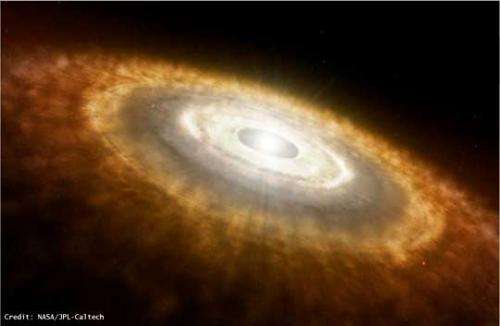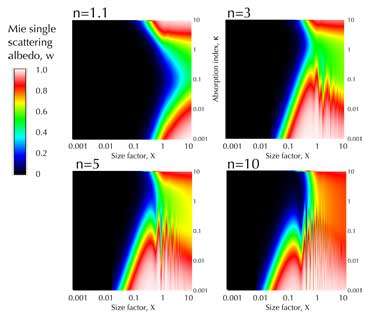How can we find tiny particles in exoplanet atmospheres?

It may seem like magic, but astronomers have worked out a scheme that will allow them to detect and measure particles ten times smaller than the width of a human hair, even at many light-years distance. They can do this by observing a blue tint in the light from far-off objects caused by the way in which small particles, no more than a micron in size (one-thousandth of a millimeter) scatter light.
In a recent study conducted by Adrian Brown of the SETI Institute, the broad outlines of this process have been worked out. "The effect is related to a familiar phenomenon known as Rayleigh scattering," says Brown. "And that's something everyone has seen: it makes the sky blue."
By analyzing spectroscopic data from the Cassini orbiter, the Mars Reconnaissance Orbiter, and ground-based telescopes, Brown has managed to document this blue enhancement in many nearby objects, including the rings of Saturn, its moons Dione and Epimetheus, Mars, the moon, and the tail of Comet 17P/Holmes.
Brown's theoretical study of the phenomenon showed that the spectral bluing occurs any time sufficiently small objects are in our field of view. In his studies, he considered particles between 0.1 and 1.0 microns in size. A human hair is roughly 17 microns in diameter.
So why isn't the ground beneath our feet blue? Brown's research suggests that the effect is quickly damped by other objects that, despite being of the same type, have different size distributions. The effect depends on having many particles within a narrow range of size. In addition, too many tiny particles might turn objects white. As an example of the latter, a glass of milk appears white because of multiple scattering from fat globules, and clouds appear white due to multiple scattering from water aerosols (droplets).

Consequently, the bluing effect requires some process that forms lots of particles of almost identical size. Simply establishing that such a process is present can give researchers clues to the history and conditions on extraterrestrial bodies.
"This technique would, in principle, allow us to find extremely tiny particles in the atmospheres or on the surfaces of exoplanets that are tens or thousands of light-years away," Brown says.
The research was published in the September 1 issue of Icarus.
More information: Adrian J. Brown, "Spectral bluing induced by small particles under the Mie and Rayleigh regimes," Icarus, Volume 239, 1 September 2014, Pages 85-95, ISSN 0019-1035, dx.doi.org/10.1016/j.icarus.2014.05.042 . On Arxiv: arxiv.org/abs/1307.5096v1
Journal information: Icarus
Provided by SETI Institute





















